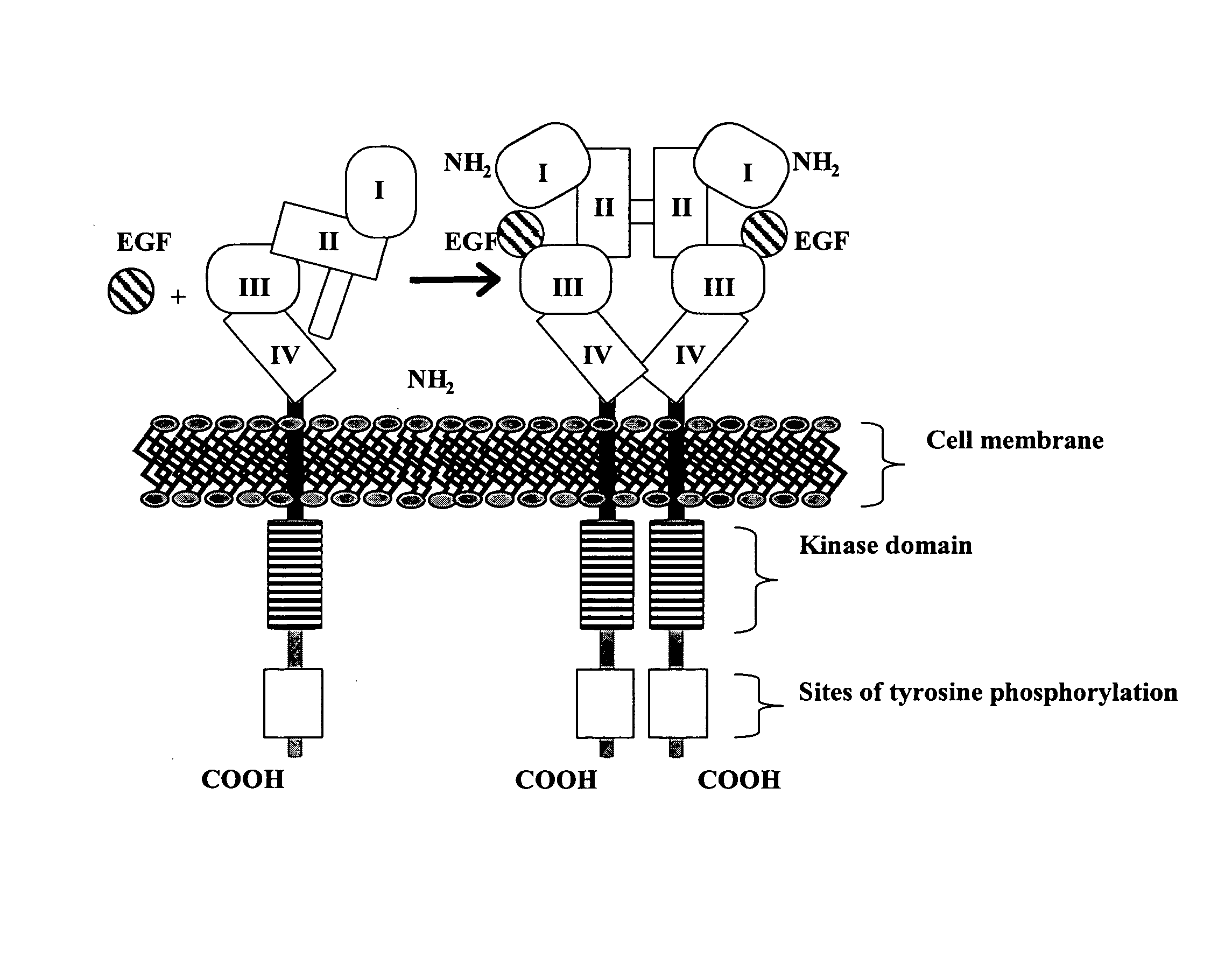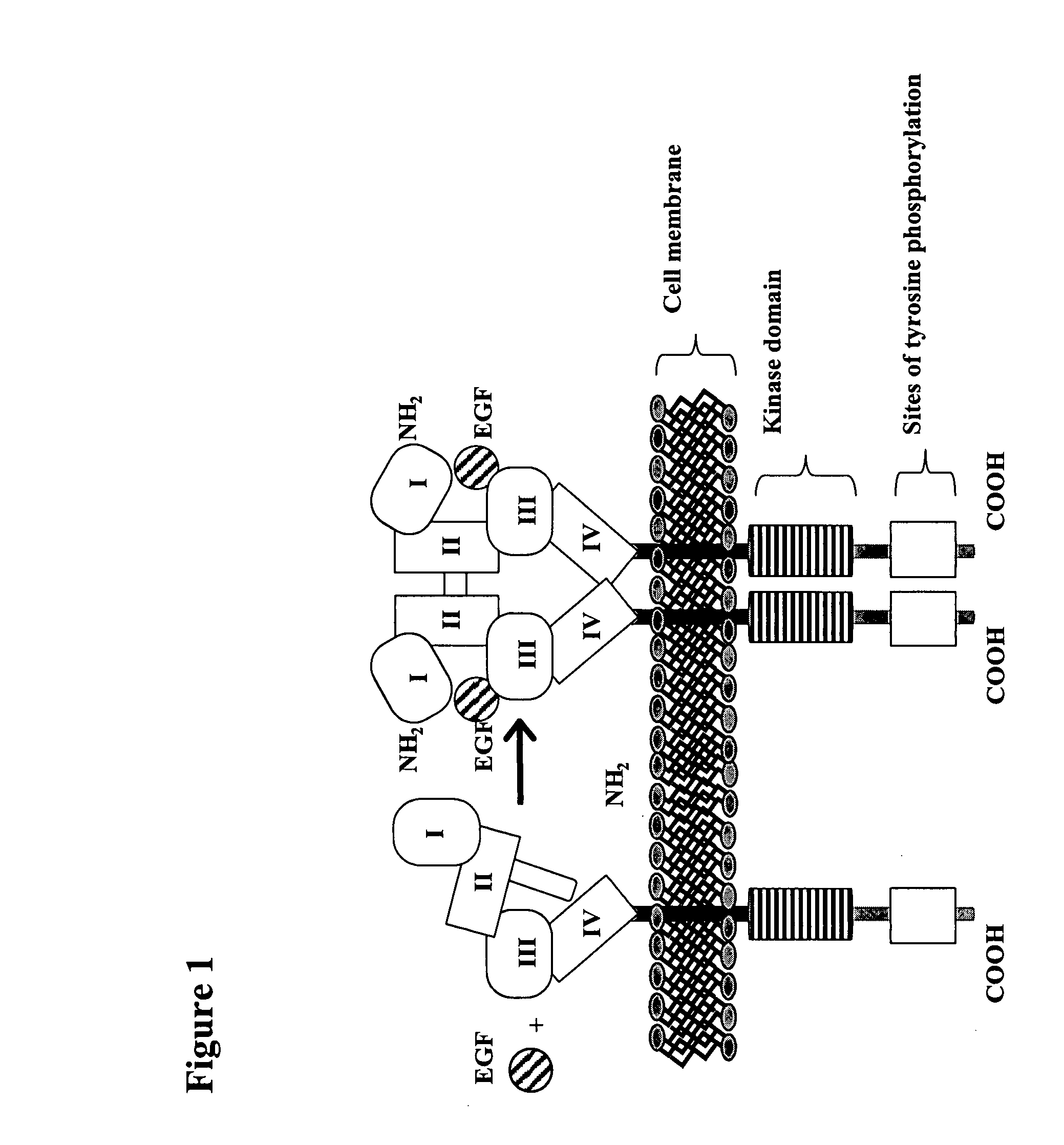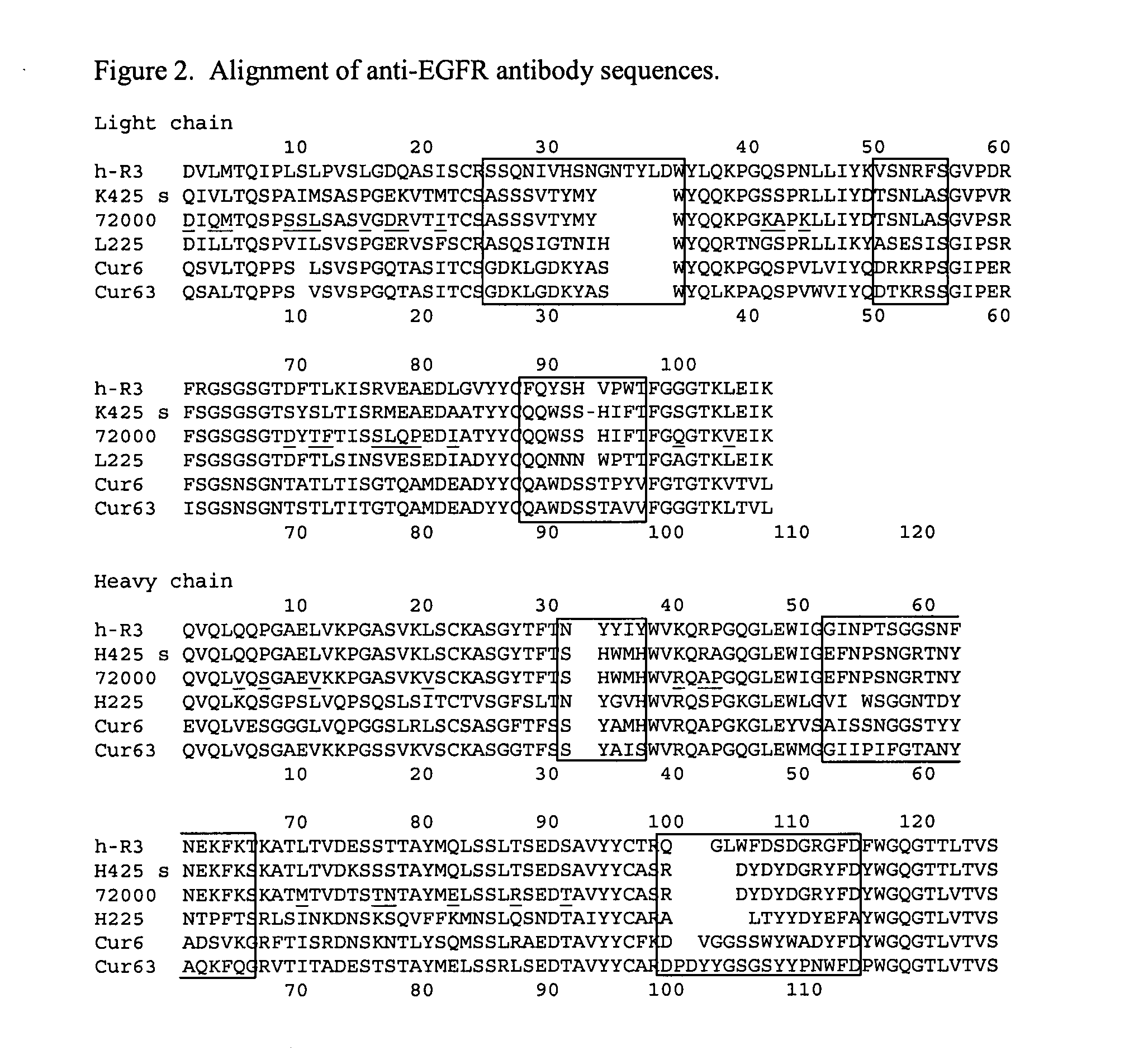Treatment of tumors expressing mutant EGF receptors
a tumor and mutant technology, applied in the field of tumor treatment, can solve the problems of unsolved cancer, antibody that simply recognizes tumor-specific antigens is generally ineffective, and there is no clear correlation between patients and patients, so as to reduce the size of tumors, slow or prevent an increase in tumor size, and increase the disease-free survival time
- Summary
- Abstract
- Description
- Claims
- Application Information
AI Technical Summary
Benefits of technology
Problems solved by technology
Method used
Image
Examples
example 1
Identification of the Epitope of EMD72000
[0101] The epitope of EMD72000 on EGFR was identified essentially by the ‘yeast display’ method of Kieke et al. (U.S. Pat. No. 6,300,065), Cochran et al., supra, and Chao et al., supra with the following specific variations. Chao et al. had found that the entire extracellular domain of EGFR was poorly expressed when fused to the Aga2 protein and expressed on the surface of the yeast Saccharomyces cerevisiae, so they fused amino acids 273-621 of EGFR to Aga2 for identification of the epitopes for the monoclonal antibodies 13A9, C225, and 806.
[0102] It was found that EMD72000 bound poorly to the EGFR (273-621)-Aga2 fusion protein on the surface of yeast, so a mutant derivative of the full-length EGFR extracellular domain was selected that was efficiently expressed on the surface of yeast as an Aga2 fusion protein. This mutant derivative has the amino acid substitutions Ala62Thr, Leu69His, Phe380Ser, and Ser418Gly.
[0103] The procedure of Chao...
example 2
Construction of a Full-Length Antibody that Recognizes EGFRvIII
[0105] MR1-1 refers to a set of variable regions that recognize the novel peptide junction in EGFRvIII. Beers et al. (Clin Cancer Res. 6:2835-43 (2000)) describe the optimization of these variable regions from the parental variable regions, termed MR1. Landry et al. (J Mol Biol. 308:883-93 (2001)) describe the solved structure of the MR1 variable regions with a peptide corresponding to the junctional peptide in EGFRvIII.
[0106] The variable regions of MR1-1 were placed in the context of an intact antibody with a human IgG1 heavy chain and a kappa light chain for purposes of comparison with EMD72000 in the internalization studies in the following example.
[0107] The following standard methods were used to express MR1-1. DNA sequences encoding the heavy and light chain V region protein sequences of MR1-1 were inserted into the antibody expression vector pDHL10, which is a derivative of pDHL2 (Gillies et al., J. Immunol. M...
example 3
Inhibition of EGFRvIII Signaling by an Antibody that Binds to the Ser460 / Gly461 Epitope
[0112] The ability of various antibodies to inhibit signaling by EGFR and EGFRvIII was tested using four cell lines derived from human mammary epithelial cells (HMECs), whose properties are described in Table 3 below. The parental HMECs were obtained from the American Type Culture Collection (Manassas, Va. USA). Cells expressing EGFRvIII were derived from the parental HMEC line by viral transduction with an EGFRvIII expressing virus constructed according to standard procedures (see, for example, Nishikawa et al., Proc. Natl. Acad. Sci. 91:7727-7731 (1994). After recovery from the viral transduction protocol and some outgrowth, successfully infected cells were sorted using a FACS machine into populations expressing high, medium and low levels of EGFRvIII.
TABLE 3Inhibition of Receptor SignalingEGFRvIII expressionCell lineEGFR+ expression levellevelParental HMECs2 × 105 / cell0(pHMECs)HMEC-vIII low2...
PUM
| Property | Measurement | Unit |
|---|---|---|
| Fraction | aaaaa | aaaaa |
| Fraction | aaaaa | aaaaa |
| Fraction | aaaaa | aaaaa |
Abstract
Description
Claims
Application Information
 Login to View More
Login to View More - R&D
- Intellectual Property
- Life Sciences
- Materials
- Tech Scout
- Unparalleled Data Quality
- Higher Quality Content
- 60% Fewer Hallucinations
Browse by: Latest US Patents, China's latest patents, Technical Efficacy Thesaurus, Application Domain, Technology Topic, Popular Technical Reports.
© 2025 PatSnap. All rights reserved.Legal|Privacy policy|Modern Slavery Act Transparency Statement|Sitemap|About US| Contact US: help@patsnap.com



